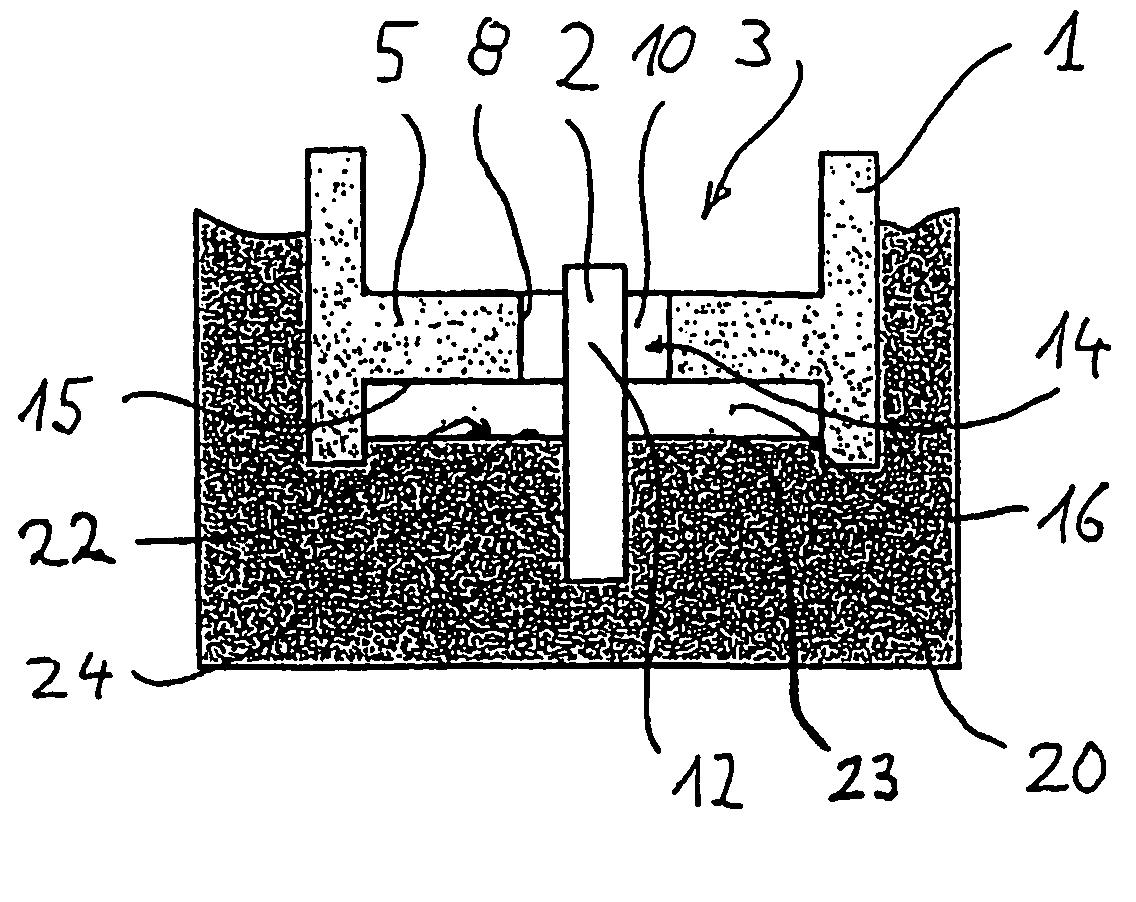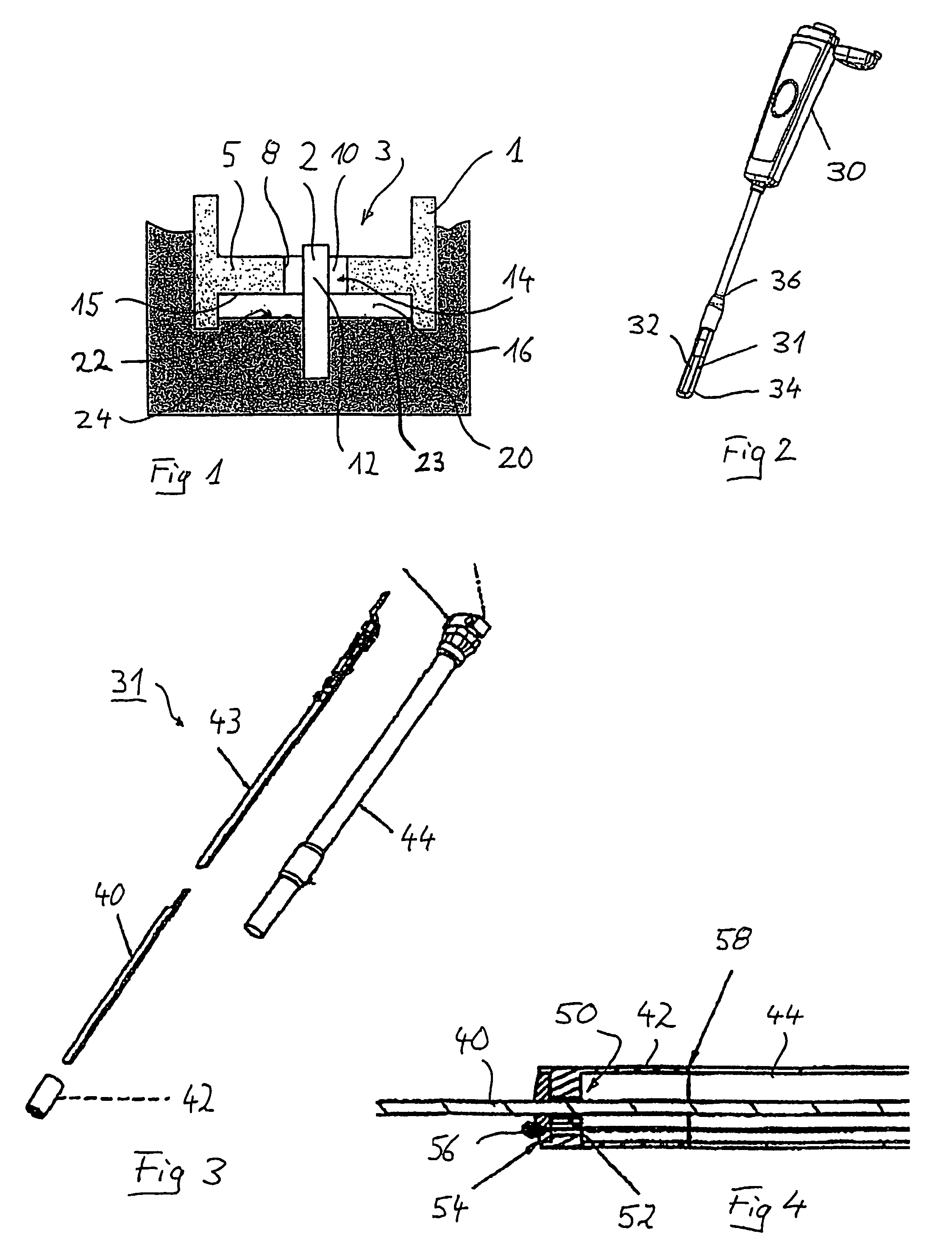Thermally stable and liquid-tight joint between a first ceramic, metal, or plastic component and a second ceramic, metal or plastic component, and the use of one such joint
a technology of ceramics and metals, applied in the field of thermostable and liquid-tight joints between a first component and a second component, can solve the problems of cracking of joints, high demands on joints in practice, and often exposed joints to extreme mechanical stresses, and achieves the effect of greater elasticity
- Summary
- Abstract
- Description
- Claims
- Application Information
AI Technical Summary
Benefits of technology
Problems solved by technology
Method used
Image
Examples
Embodiment Construction
[0025]FIG. 1 schematically shows a joint according to one embodiment of the present invention between a metallic component 1 and a ceramic component 2. The metallic component has a sleeve-shaped design including a pass-through bore 3 and an intermediate plate 5 running transversally therein. A bore 8 for passage of ceramic component 2 is provided in intermediate plate 5. The area of bore 8 is filled with a top quality adhesive 10 which firmly embeds a section 12 of ceramic component 2. Adhesive 10 is a particularly strong adhesive which exhibits high adhesivity to metal as well as ceramic materials and, by forming a first bond 14, ensures secure fixing of the ceramic component in bore 8.
[0026]Adhesives 10, suitable for these purposes, must have the following properties: They must be very good electrical insulators with as favorable as possible dielectric properties in the entire temperature range. In addition, the adhesives must be able to be used in the temperature range from room ...
PUM
| Property | Measurement | Unit |
|---|---|---|
| Temperature | aaaaa | aaaaa |
| Area | aaaaa | aaaaa |
| Elasticity | aaaaa | aaaaa |
Abstract
Description
Claims
Application Information
 Login to View More
Login to View More - R&D
- Intellectual Property
- Life Sciences
- Materials
- Tech Scout
- Unparalleled Data Quality
- Higher Quality Content
- 60% Fewer Hallucinations
Browse by: Latest US Patents, China's latest patents, Technical Efficacy Thesaurus, Application Domain, Technology Topic, Popular Technical Reports.
© 2025 PatSnap. All rights reserved.Legal|Privacy policy|Modern Slavery Act Transparency Statement|Sitemap|About US| Contact US: help@patsnap.com


